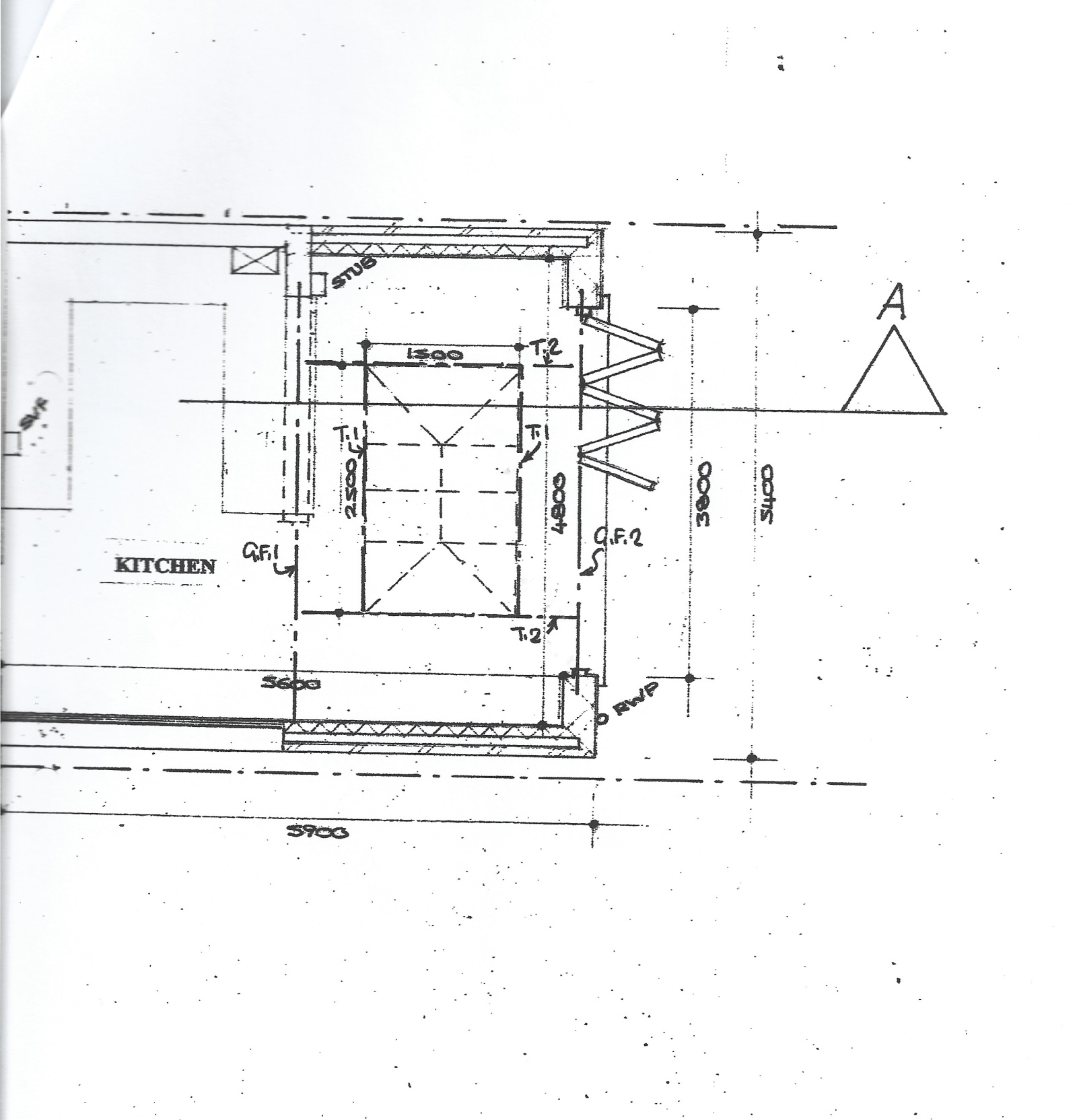We’d like to remind Forumites to please avoid political debate on the Forum.
This is to keep it a safe and useful space for MoneySaving discussions. Threads that are – or become – political in nature may be removed in line with the Forum’s rules. Thank you for your understanding.
📨 Have you signed up to the Forum's new Email Digest yet? Get a selection of trending threads sent straight to your inbox daily, weekly or monthly!
I need help interpreting this engineering plan
pieroabcd
Posts: 737 Forumite




Hi,
I want to hang a couple of shelves on the kitchen extention wall to hold the 50 inch tv (14kg) and some lightweight appliances, but I'm a bit confused about the places to drill.
Knocking with a finger on the internal walls I can hear an alternation of full and hollow sounds, so I suspect that there's a wood frame behind the plaster. A big and heavy radiator is hanging on one of the walls. Knocking on the vertical of two of the hangers the sound is full, while on the vertical of another one the sound is hollow.
I've found this plan dating back to 2014.
One of the notes ot the top reads
cavity wall:
block 0.60
insulation 0.20
bricks 2.20
This is the plan that it includes.

I don't understand what's the structure of the walls.
The innermost one shows a ripple, the middle one is blank (is it the empty space / cavity?) and the external one shows another symbol like a //.
Can someone explain what's the meaning of those symbols, please?
Do I have to follow the full sounds to drill the holes or are the innermost walls made of bricks too?
Is it safe to drill on the vertical of the radiator hangers or would I risk overloading the structure?
Did I ever mention how little love (-inf) I feel for timberframes? :-)
Thanks.
I want to hang a couple of shelves on the kitchen extention wall to hold the 50 inch tv (14kg) and some lightweight appliances, but I'm a bit confused about the places to drill.
Knocking with a finger on the internal walls I can hear an alternation of full and hollow sounds, so I suspect that there's a wood frame behind the plaster. A big and heavy radiator is hanging on one of the walls. Knocking on the vertical of two of the hangers the sound is full, while on the vertical of another one the sound is hollow.
I've found this plan dating back to 2014.
One of the notes ot the top reads
cavity wall:
block 0.60
insulation 0.20
bricks 2.20
This is the plan that it includes.

I don't understand what's the structure of the walls.
The innermost one shows a ripple, the middle one is blank (is it the empty space / cavity?) and the external one shows another symbol like a //.
Can someone explain what's the meaning of those symbols, please?
Do I have to follow the full sounds to drill the holes or are the innermost walls made of bricks too?
Is it safe to drill on the vertical of the radiator hangers or would I risk overloading the structure?
Did I ever mention how little love (-inf) I feel for timberframes? :-)
Thanks.
0
Comments
-
The walls either end of the kitchen are solid brick (no cavity)
The walls surrounding the other room are, internal block external brick with cavity between
Just because you hear solid and hollow sounds doesn’t mean it a hollow stud wall, you could be tapping between plasterboards dabs. (Adhesive to stick plasterboard to the blocks)
What makes you think it’s timber frame ?
If you are fixing the tv bracket on a brick/block wall use 100mm frame fixers (Wicks) if on studded wall try to fix the the studding uprights with 75mm screws
Test drill behind where the tv is going with 3mm bit to find out if it's hollow or not
Be careful not to hit pipes/cables0 -
By block you mean bricks made of concrete like this?
or maybe hollow like this?
I suspected a timber frame because of the hollow sound, but it's nice to know that it can be due to the plasterboard dabs.
I've ordered one of those tools to find metal/pipes/studs to make sure i don't hit anything sensitive.
Thanks!0 -
Not the hollow one
Cables for switches or sockets normally are vertical to the ceiling
Pipes would be to radiators in copper or plastic
Don’t rely solely on the stud finder tool look logically0 -
Although the wall construction is block and brick most walls these days seems to be finished off internally with plasterboard rather than by plastering the walls. Cheaper and easier for the builder but a potential pain in the wotsit if you later want to put anything on the wall.
0
Confirm your email address to Create Threads and Reply

Categories
- All Categories
- 352.8K Banking & Borrowing
- 253.8K Reduce Debt & Boost Income
- 454.6K Spending & Discounts
- 245.8K Work, Benefits & Business
- 601.9K Mortgages, Homes & Bills
- 177.7K Life & Family
- 259.7K Travel & Transport
- 1.5M Hobbies & Leisure
- 16K Discuss & Feedback
- 37.7K Read-Only Boards




